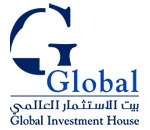Media experts believe that the current financial crisis, in tandem with the fast changing demographics of the region will turn as much as 80 per cent of advertising to digital platforms such as internet and mobile phones.
Speaking at a conference, titled “Coping with Change, Yes, We can”, at the Dubai Press Club, some of the region’s media experts conveyed that the current projections for ad spent on print media will hold on to a mere 20 per cent, while digital platforms will grab the rest in a few years’ time.
Echoing the findings of the latest edition of the Arab Media Outlook 2008-2012, some speakers said that broadband would make a strong impact on the media scene, bringing better efficiency and cost-effectiveness.
The new edition of the Arab Media Outlook, the media analysis recently brought out by Dubai Press Club in conjunction with PricewaterhouseCoopers, has revealed that demographic factors are among the principal reasons why the Arab World is most suitable for the growth of new forms of media, such as digital media and mobile TV.
The report based its conclusions on extensive research in 12 Arab countries, says that one common feature across all 12 markets is that young people make up a relatively high percentage of the population. “Over 50 per cent of the population in Yemen, Oman, Saudi Arabia, Jordan, Morocco and Egypt are estimated to be currently less than 25 years old, while in the rest of the countries the under-25 ‘net generation’ makes up around 35 per cent to 47 per cent of total population,” said the report.
The seminar, which saw a detailed discussion on rapid changes in the media industry and the challenges posed by the current financial meltdown, was addressed by Richard Withey, Dr Ali Al-Assam, Managing Director of KnowledgeView Ltd, Francis Matthew, Editor-at-large, Gulf News and Magdi Hannah, Press IT supervisor, Abu Dhabi Media company.
Personally, with all due respect to the speakers and their opinions, and even though I’m pretty optimistic about the outlook for online advertising in the Arab world over these coming years, and am on the side that thinks this financial crisis will grow the market of digital advertising, I still think a growth from around 1% of overall advertising budgets to 80% in just a few years is a bit exaggerated, and neither is it healthy.
 Per capita online shopping in the UAE reached $1,193 (Dh4,378) in the fourth quarter of 2008, making it the highest in the Asia/Pacific, Middle East and Africa region, according to the latest MasterCard survey.
Per capita online shopping in the UAE reached $1,193 (Dh4,378) in the fourth quarter of 2008, making it the highest in the Asia/Pacific, Middle East and Africa region, according to the latest MasterCard survey. A new
A new  More Middle East business people used mobile devices to hook on to the internet last month, compared with February 2007, while fewer used computers, a just released survey showed.
More Middle East business people used mobile devices to hook on to the internet last month, compared with February 2007, while fewer used computers, a just released survey showed.
 The mobile subscribers sector in Saudi Arabia will expand by over 27 per cent in 2008, lifting the official mobile penetration rate to 144 per cent, according to Business Monitor International (BMI).
The mobile subscribers sector in Saudi Arabia will expand by over 27 per cent in 2008, lifting the official mobile penetration rate to 144 per cent, according to Business Monitor International (BMI). According to estimative numbers released by Tunisian market research firm
According to estimative numbers released by Tunisian market research firm